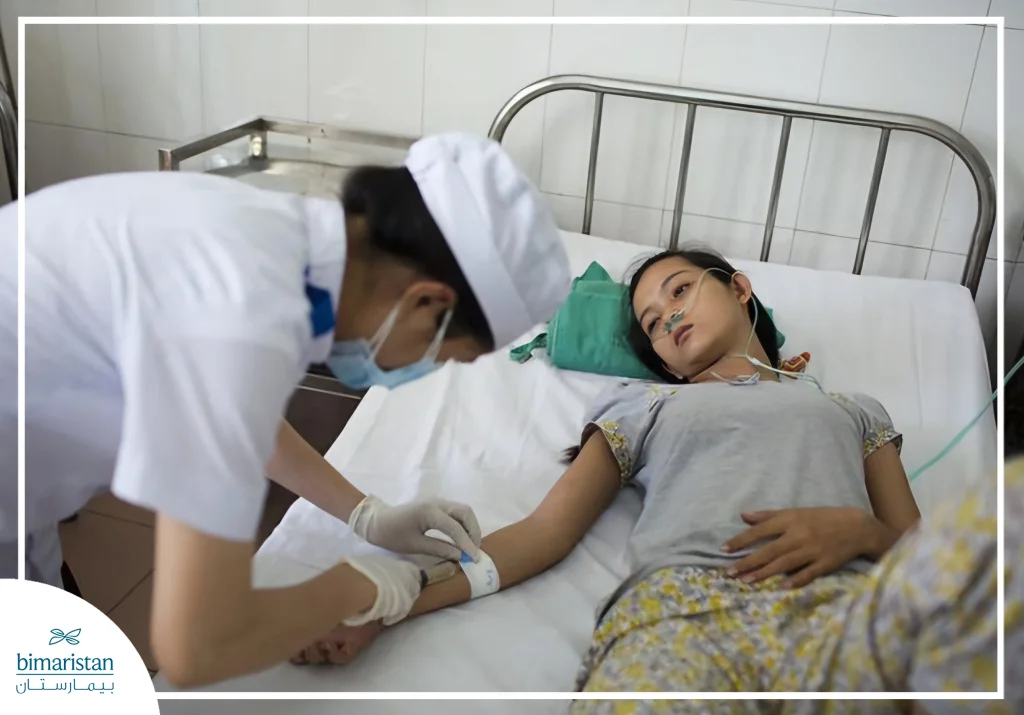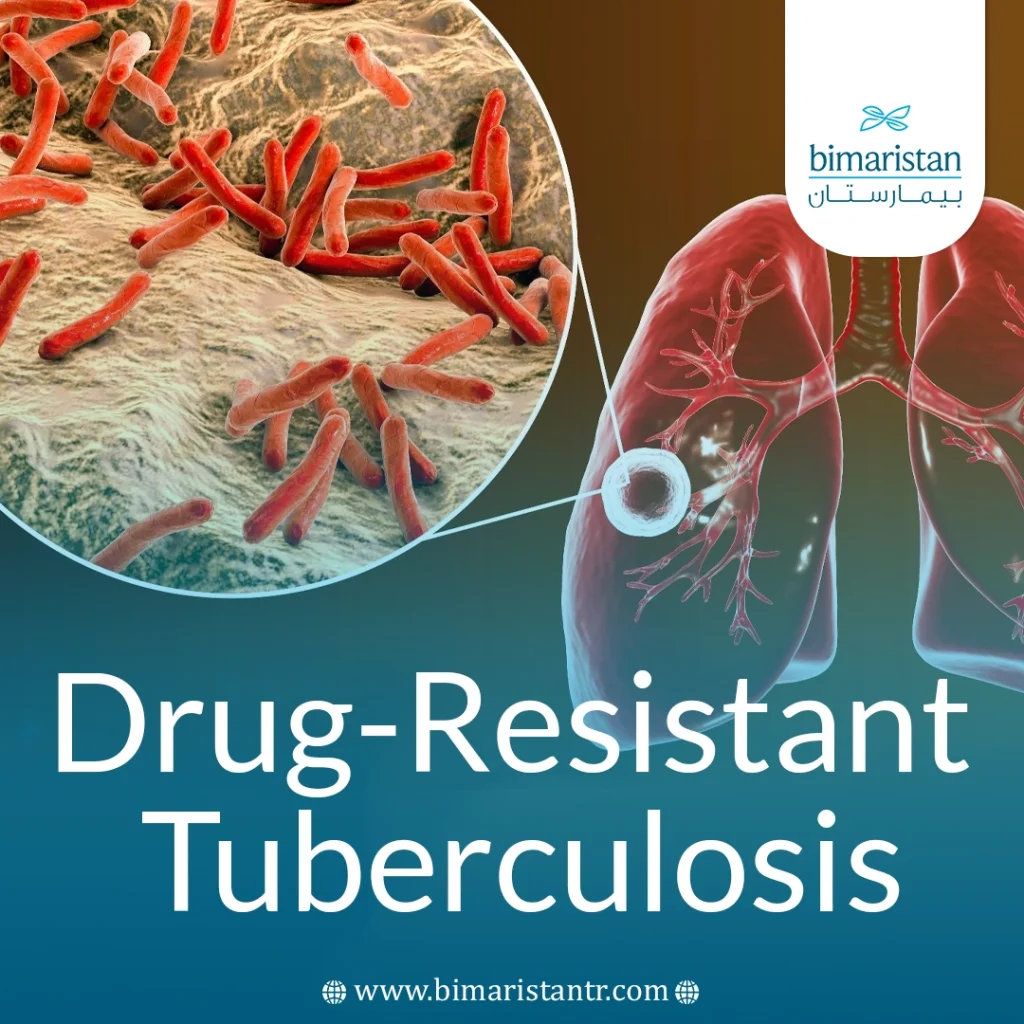Tuberculosis (TB) is a disease that can usually be treated and cured when adhering to prescribed medications, but some cases develop resistance to these drugs, making the disease more difficult to control. This is known as drug-resistant Tuberculosis and is one of the most serious challenges facing public health systems around the world.
The World Health Organization (WHO) estimates that hundreds of thousands of people are infected with this strain every year, increasing the burden on health centers and treatment programs in low- and middle-income countries. The emergence of drug resistance leads to a decrease in the effectiveness of conventional treatment and an increase in relapse and death rates, necessitating the adoption of long-term treatment regimens and careful monitoring to ensure infection control and limit its spread.
What is drug-resistant tuberculosis?
Drug-resistant tuberculosis occurs when the Mycobacterium tuberculosis bacterium becomes insensitive to one or more of the effective drugs usually used to treat tuberculosis, the infection is transmitted in the same way as ordinary tuberculosis through droplets from the infected person, but the delay in detecting resistance or delaying access to appropriate treatment leads to an increase in the spread of infection and the emergence of new, more resistant strains.
This form of the disease is a growing threat to public health in many countries. In recent years, the number of infections with bacteria resistant to the most effective drugs, such as isoniazid and rifampicin, has increased. Drug-resistant tuberculosis causes higher rates of complications and mortality as well as the need for longer, more expensive, and complex treatments, making it a real challenge to control, requiring accurate diagnosis and specialized medical supervision.
Types of drug-resistant tuberculosis
Drug-resistant tuberculosis comes in many forms, depending on the number and type of drugs that lose their effectiveness against the TB bacterium:
- Monoresistant tuberculosis: Occurs when the bacterium shows resistance to only one of the TB treatment drugs.
- Partially resistant tuberculosis: Occurs when the bacterium is resistant to two or more TB drugs, provided they are not both isoniazid and rifampicin.
- Multidrug-resistant tuberculosis (MDR-TB)
- Pre-XDR-TB: An advanced form of MDR-TB in which the bacterium is resistant to isoniazid and rifampicin plus a fluoroquinolone, or a second-line injectable drug such as amikacin, kanamycin, or capreomycin.
- Extremely Resistant Tuberculosis (XDR-TB)
These types of tuberculosis are a growing issue globally, as the continuous spread of resistant strains makes it difficult to control the disease and increases the need for new drugs capable of overcoming the growing resistance. The following is an explanation of the most important and most common types:
Multidrug-resistant tuberculosis (MDR-TB)
Multidrug-resistant tuberculosis (MDR-TB) is the most common form of resistant tuberculosis and occurs when the Mycobacterium tuberculosis bacterium develops resistance to two of the most important first-line drugs, isoniazid and rifampicin. MDR-TB is often caused by human error during treatment, such as inappropriate prescribing, poor drug quality, or discontinuation of drugs before completion of the prescribed duration. The absence of effective national TB control programs and weak medical supervision also contribute to the increase in infection and transmission rates within the community.
Symptoms of MDR-TB are similar to those of regular TB and include chronic cough, weight loss, general fatigue, and mild fever, but the disease lasts longer because the bacterium is slow to respond or unresponsive to standard treatment. This form is prevalent in most regions of the world, with the highest rates concentrated in China, India, and countries in Eastern Europe and Central Asia, according to World Health Organization (WHO) estimates.
MDR-TB treatment requires the use of second-line drugs such as fluoroquinolones and injectable drugs (such as amikacin or capreomycin) in addition to other drugs such as Linezolid, Clofazimine, Cycloserine, and in difficult cases, Bedaquiline or Delamanid may be added. Treatment usually lasts from 18 to 24 months and needs careful follow-up to avoid side effects and ensure full adherence to the treatment plan.
Extremely Resistant Tuberculosis (XDR-TB)
Extremely resistant tuberculosis (XDR-TB) is the most complex and dangerous form of drug-resistant TB. In this type, the bacterium loses its sensitivity to rifampicin and a fluoroquinolone drug, as well as another newer priority class drug such as Bedaquiline or Linezolid, making treatment options more limited and recovery more difficult.
XDR-TB resistance is often the result of uncontrolled development of MDR-TB when drugs are used inappropriately or when treatment is not adhered to for long periods of time. For this reason, XDR-TB is considered an advanced stage of drug resistance that requires early diagnosis to prevent community transmission.
Studies show that the chances of recovery from XDR-TB are lower than for other conditions, with cure rates ranging between 40% and 60%, depending on the availability of modern drugs and follow-up possibilities. Treatment in these cases is based on individualized regimens designed after drug sensitivity testing for each patient, with careful monitoring for side effects such as hepatotoxicity and neurotoxicity. It is recommended that these cases be managed exclusively in specialized medical centers with teams of experts in the treatment of DR-TB, with continuous psychological and nutritional support for the patient to ensure adherence to the complex and long treatment plan.
Causes of drug-resistant tuberculosis
Drug-resistant TB develops in two main ways, depending on the mechanism of resistance emergence and transmission between individuals:
- Primary resistance: This occurs when drug-resistant Mycobacterium tuberculosis germs are transmitted from an infected person to a healthy person, i.e. the patient is initially infected with a resistant strain without having been previously treated. This type is a serious indicator that the infection is spreading within the community and is difficult to control.
- Secondary or acquired resistance: They arise during TB treatment as a result of human error or treatment issues, and include
:Polylang placeholder do not modify
Together, these factors make it possible for germs to develop new genetic mutations that give them the ability to resist drugs, making treatment more difficult and infections more widespread within the community.
The impact of HIV on drug resistance in tuberculosis
The interaction between HIV and tuberculosis is one of the most complex factors complicating infection control in developing countries. HIV infection severely weakens the immune system, making the body less able to resist or eliminate the TB germ even during treatment. This weakened immune system leads to a higher likelihood of developing drug resistance, as the germs are able to survive longer periods inside the body and repeated exposure to drugs without being completely eliminated, and patients with HIV often have difficulty adhering to treatment due to side effects or interactions between TB and HIV medications, increasing the risk of developing resistant strains.
Statistics show that rates of multidrug-resistant tuberculosis (MDR-TB) are clearly higher among people living with HIV, especially in sub-Saharan Africa and Southeast Asia, where there is extensive co-infection. WHO emphasizes the importance of integrating TB treatment programs with HIV programs to ensure early diagnosis and treatment coordination that prevents the development and spread of resistance.
Diagnosing drug-resistant tuberculosis
Diagnosing drug-resistant TB is an essential step in determining the right treatment plan for each patient, as the presence of resistance can only be confirmed through drug susceptibility tests that reveal how well the TB bacterium responds to different drugs. The results of these tests help doctors choose effective drugs and avoid using drugs that have lost their effectiveness. Modern medical laboratories rely on two main types of tests:
- Rapid molecular tests: These tests detect the genetic mutations responsible for the bacterium’s drug resistance, can be performed directly on sputum samples without waiting for laboratory culture, and usually show results in just a few hours. The GeneXpert test, approved by the World Health Organization, can give an accurate result in about two hours, allowing appropriate treatment to be initiated quickly.
- Culture-based tests: TB germs are cultured in special media containing antibiotic drugs, and if the germs continue to grow, they are considered resistant to the drug. This method is more accurate but takes longer, up to 3 weeks.
If the patient does not improve after three months of treatment or the culture results remain positive, the sensitivity test must be repeated to assess the effectiveness of the drugs used, while second-line drug tests are performed exclusively in specialized reference laboratories to ensure accuracy and safety. These new technologies contribute to the early detection of drug resistance and help prevent the spread of infection from patients who are unresponsive to conventional treatment.

Treatment for drug-resistant tuberculosis
The treatment of drug-resistant tuberculosis is one of the most complex phases of dealing with the disease, requiring close medical supervision and continuous follow-up to ensure the elimination of the germ and prevent the development of additional resistance. The success of treatment depends on knowing which drugs are still effective against the strain that causes the disease, so the treatment plan is based on the results of drug sensitivity testing for each individual patient.
Patients are usually treated in special programs known as DOTS-Plus, a specialized version of the DOT program used to treat drug-sensitive tuberculosis. In this system, health staff follow the patient daily to ensure that medications are taken regularly, reducing the likelihood of relapse or treatment failure and limiting community transmission. It is also recommended that patients be followed up in specialized centers that are able to monitor side effects and periodically monitor the evolution of the treatment response.

Second-line medications
Unlike traditional TB treatment that relies on first-line drugs for about six months, resistant cases require a longer and more complex treatment plan. When basic drugs such as isoniazid and rifampicin lose their effectiveness, doctors resort to second-line drugs, which include a range of oral and injectable drugs that are more potent but require careful monitoring due to their potential side effects.
- Fluoroquinolone medications (such as Levofloxacin and Moxifloxacin)
- Injection medications (such as Amikacin and Capreomycin)
- Other oral medications such as Linezolid, Clofazimine, Cycloserine, Ethionamide and Pyrazinamide
Medications are chosen based on test results, and treatment usually lasts for 18 to 24 months with careful monitoring for liver, neurologic, and auditory toxicity.
Modern short-term treatments
Recent recommendations for 2025 call for shorter, safer regimens that rely entirely on oral medications, with no need for injections. These include:
- BPaL system (featuring Bedaquiline + Pretomanid + Linezolid)
- System BPaLM (same formulation with Moxifloxacin)
Studies have shown that these systems reduce the duration of treatment to only about 9 months with cure rates exceeding 85% in some centers compared to long conventional treatments.
Follow-up and preventive isolation
In the early stages of treatment, it is usually recommended to temporarily isolate the patient in a specialized hospital or ward until laboratory tests show that the sputum is negative and non-infectious. This measure aims to limit the spread of resistant strains within the community and protect family members and close contacts. Strict adherence to medications and regular medical follow-up is essential to ensure successful treatment, as doctors conduct monthly liver and blood tests to monitor the toxicity of the drugs and adjust doses when needed, and the patient is provided with continuous psychological and nutritional support to help him endure the long treatment period and adhere to it until full recovery.
Complications and effects of drug-resistant tuberculosis
Drug-resistant tuberculosis (DR-TB) is one of the most serious chronic infections, causing permanent damage to the lungs as a result of persistent inflammation and fibrous scar formation, impairing respiratory capacity even after recovery. In some cases, the infection can spread to other organs such as the bones or kidneys.
Long treatment is accompanied by the risk of drug side effects such as hepatotoxicity, neurotoxicity, hearing or vision disorders, as well as psychological fatigue due to the long treatment period. The disease also represents an economic burden on the patient and society due to the high cost of medications and the long duration of medical follow-up.
Preventing the spread of drug-resistant tuberculosis
Prevention of drug-resistant TB begins with limiting exposure to TB germs transmitted from infected patients, especially in closed or crowded places, so workers in hospitals or centers that treat TB cases are advised to consult infection control specialists and follow safety measures such as good room ventilation and the use of protective masks when dealing with patients.
Prevention of secondary acquired resistance is achieved through strict adherence to treatment and taking all medications on time and without interruption, as early stopping or forgetting doses allows germs to survive and evolve to become more resistant. Medical staff help in prevention by diagnosing cases early, conducting drug sensitivity tests to determine the most appropriate treatment, and following up on the patient’s response to treatment periodically until recovery is complete. Directly monitored treatment programs help ensure full adherence and prevent treatment failure or the development of new resistance.
In conclusion, drug-resistant tuberculosis is one of the most serious challenges facing modern medicine, as it requires long treatment and close supervision to ensure full recovery and prevent the spread of resistant strains, and with the development of modern medicines and strict follow-up programs, recovery rates have increased and the chances of controlling the disease are better than before. Bimarestan Medical Center provides patients in Turkey with integrated consultation services and guidance towards centers specialized in treating complex TB cases with the latest international protocols, so that patients receive the best care in a safe and advanced environment.
Sources:
- Centers for Disease Control and Prevention. (2025, January 6). Clinical overview of drug-resistant tuberculosis disease.
- American Thoracic Society, U.S. Centers for Disease Control and Prevention, European Respiratory Society, & Infectious Diseases Society of America. (2019). Treatment of drug-resistant tuberculosis: An official ATS/CDC/ERS/IDSA clinical practice guideline. American Journal of Respiratory and Critical Care Medicine, 200(10), e93-e142. https://doi.org/10.1164/rccm.201909-1874ST

